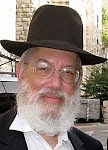В интервью газете HuffPost UK Бесс сказала, что её мальчики не говорят вообще – в возрасте 4 лет. Они могут лишь произнести несколько слов на смеси английского и немецкого, не знают никаких игр или песен. В центр встреч дети приходят с грязными, спутанными волосами, в грязной, давно не стиранной одежде, немытыми и очень, очень напуганными. Знакомые семьи подали многочисленные жалобы о состоянии детей в социальные службы, но ни одна из них не была принята к сведению.
Жила-была в Манчестере девушка по имени Бесс Александер, религиозная еврейка, окончившая Кэмбриджский университет. И однажды она познакомилась в Париже с доктором из Австрии, Михаэлем Шлезингером, тоже ортодоксальным евреем, принадлежащим к одной из наиболее влиятельных и богатых семей в Австрии. Бесс поспешила выйти за него замуж. Вскоре она поняла, что совыршила ужасную ошибку. Муж издевался над ней, угрожал и бил, даже после рождения детей – близнецов Самуэля и Бенжамина. В 2010 году Шлезингер попытался добиться госпитализации жены в психиатрической лечебнице закрытого типа, но вместо этого полиция удалила из дома его, посчитав, что его поведение представляет угрозу для жены и детей. Доктор бил не только жену, но также и своего тестя, и даже собственного отца.
Шлезингер позвонил судье Верховного суда Австрии, своему близкому другу Констанзе Тау, и поросил ее поговорить с судьей, которая вела его дело о насилии в семье и разводе, Сюзанне Готтлихер. После встречи друх судей, Готтлихер изменила своё мнение и постановила, что отныне Бесс не будет иметь полной опёки над детьми, как было решено раньше. Половину времени они будут проводить с отцом. Бесс был перекрыт выезд за границу. Слушания в суде не было – судья приняла это решение за кулисами. В 2011 году Шлезингер потребовал психиатрической экспертизы для своей бывшей жены. Экспертизы была проведена на немецком языке, которым Бесс почти не владеет. Психиатр ( состоящий в штате судьи Констанзы Тау) пришел к выводу о её неадекватности, основываясь на том, что она отвечала медленно и неуверенно… Вам это ничего не напоминает, уважаемые читатели?
Неоднократно проведенные независимые экспертизы показали, что Бесс вполне адекватна и способна заботиться о детях. Несмотря на это, судья Готтлихер вынесла постановление о передаче детей под полную опеку Шлезингера. Дети были букально вырваны из её рук полицией. Несчастная женщина подавала одну апелляцию за другой, включая Верховный Суд Австрии , но ни одна из них не была рассмотрена, без объяснения причин.
Дети находятся под надзором няньки-филипиннки, не говорящей ни на одном из европейских языков. Отец детей отменяет все посещения матери – за последние несколько лет он отменил 50 визитов (!)- за которые она должна платить центру посещений – 40 евро за визит, вне зависимости от того, состоялась ли встреча в детьми.
В интервью газете HuffPost UK Бесс сказала, что её мальчики не говорят вообще – в возрасте 4 лет. Они могут лишь произнести несколько слов на смеси английского и немецкого, не знают никаких игр или песен. В центр встреч дети приходят с грязными, спутанными волосами, в грязной, давно не стиранной одежде, немытыми и очень, очень напуганными. Знакомые семьи подали многочисленные жалобы о состоянии детей в социальные службы, но ни одна из них не была принята к сведению.
Доктор Шлезингер отказался комментировать состояние, в которм находятся его дети. (История его семьи может пролить свет на его поведение. При разводе его родителей его мать получила все права на детей и не давала отцу видеться с ними. До сегодняшнего дня он не поддерживает отношений с отцом и ненавидит его – в сущности, совершенно незнакомого человека).
Как известно, Британские официальные лица, и уж тем более правительство, крайне неохотно вмешиваются в то, что происходит с их гражданами за границей. Но в этом случае злоключения гражданки Великобритании заслужили внимание членов Парламента и обсуждение в Палате Общин. Грахам Стрингер, депутат Парламента назвал случай Бесс Шлезингер «Кафкианским» и «недоступным пониманию». В докладе в Палате Общин Стрингер рассказал депутатам о сотоянии детей, о том, что у одного из мальчиков отсутствуют 4 передних зуба, а у второго – два, без всяких на то медицинских оснований. Судья Готтлихер отклонила раппорт из ясель малышей, в котором говорилось о том, что они плачут и прячутся при виде отца. Дети серьёзно отстают в развитии – чего не наблюдалось, когда они жили с матерью – и черезвычайно травмированы.
Бесс рассказала в интервью HuffPost UK, что её семья готовит иск в Европейский Суд по правам человека, при помощи Британского правительства. (Что само по себе очень необычно и доказывает неординарность этого случая).
Бесс борется за право быть матерью своим детям уже 3 года.
В статье, написанной самой Бесс, она расказывает о невыносимой боли разлуки с детми, о их дне рождения, праздниках и семейных торжествах, проходящих без них. О том, как она вернулась на Рош Га-Шана в Манчестер, чтобы не быть одной на праздники, и как рыдала в объятиях своей матери в синагоге, когда трубили в Шофар. О двойной боли ее матери – за дочь и за внуков.
Шлезингер утверждает, что Бесс отошла от религии (что не соответствует действительности,) и община Вены отвернуласть от неё, оклеветанной чужестранки, по указанию раввинов.
При чём тут мы и Израиль, скажут читатели.
Все евреи ответственны друг за друга, и когда где-то совершается зло, мы не имеем права просто стоять и смотреть. Евреи диаспоры и Израиля всегда связаны. И не только в таких случаях, как дело Полларда, когда человек пожертвовал всем ради Израиля, но и в таких, когда вроде бы Израилю нет до этого никакого дела.
Очень часто зло совершается совсем рядом с нами. Бесс – далеко не единственный человек, пострадавший от произвола чиновников, коррупции, лжи и поклёпа. Наверняка каждый из нас знает о случаях, когда это происходило в Израиле. Особенно страдают иностранцы и олим, не говорящие на иврите. Об одной из них я расскажу в следующей статье.
Бесс и её семья просят, чтобы о её истории узнали как можно больше людей. Никому не известно, где найдётся человек, который сможет ей помочь. Все материалы для этой статьи находятся в открытом доступе в Интернете, на сайте семьи Александер и в Британской прессе.








